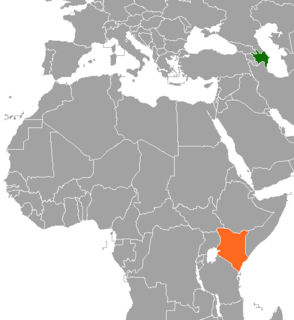Related Research Articles

The economy of Pakistan is the 24th-largest worldwide in terms of GDP based on purchasing power parity (PPP). According to 2021 estimate, Country has population of 227 million people, the nominal GDP of Pakistan stands at US$347 billion with a nominal GDP per capita of US$1,562 ; its GDP based on PPP stands at US$1.468 trillion with a GDP (PPP) per capita of US$6,470.

Vanuatu's economy is primarily agricultural; 80% of the population is engaged in agricultural activities that range from subsistence farming to smallholder farming of coconuts and other cash crops.

The economy of Andorra is a developed and free market economy driven by finance, retail, and tourism. The country's gross domestic product (GDP) was US$3.66 billion in 2007. Attractive for shoppers from France and Spain as a free port, Andorra also has developed active summer and winter tourist resorts. With some 270 hotels and 400 restaurants, as well as many shops, the tourist trade employs a growing portion of the domestic labour force. An estimated 13 million tourists visit annually.
The Harmonized Commodity Description and Coding System, also known as the Harmonized System (HS) of tariff nomenclature is an internationally standardized system of names and numbers to classify traded products. It came into effect in 1988 and has since been developed and maintained by the World Customs Organization (WCO), an independent intergovernmental organization based in Brussels, Belgium, with over 200 member countries.
The Foreign Agricultural Service (FAS) is the foreign affairs agency with primary responsibility for the United States Department of Agriculture's (USDA) overseas programs – market development, international trade agreements and negotiations, and the collection of statistics and market information. It also administers the USDA's export credit guarantee and food aid programs and helps increase income and food availability in developing nations by mobilizing expertise for agriculturally led economic growth. The FAS mission statement reads, "Linking U.S. agriculture to the world to enhance export opportunities and global food security," and its motto is "Linking U.S. Agriculture to the World."

Peak wheat is the concept that agricultural production, due to its high use of water and energy inputs, is subject to the same profile as oil and other fossil fuel production. The central tenet is that a point is reached, the "peak", beyond which agricultural production plateaus and does not grow any further, and may even go into permanent decline.

The Ministry of Commerce of Iran was the main organ of the Government in charge of the regulation and implementation of policies applicable to domestic and foreign trade. This includes:
One way of attributing greenhouse gas (GHG) emissions is to measure the embedded emissions of goods that are being consumed. This is different from the question of to what extent the policies of one country to reduce emissions affect emissions in other countries. The UNFCCC measures emissions according to production, rather than consumption. Consequently, embedded emissions on imported goods are attributed to the exporting, rather than the importing, country. The question of whether to measure emissions on production instead of consumption is partly an issue of equity, i.e., who is responsible for emissions.

A trading nation is a country where international trade makes up a large percentage of its economy.
There are multiple market layers for wood products. Each country has its own domestic market that may be connected to a regional or global market. Timber supply to domestic markets in many tropical forest countries is largely provided by informal logging, namely chainsaw milling. Regional and global markets involve producer, passthrough, processing, and consumer countries.
The minimum support price (MSP) is an advisory price signal that is part of a larger set of agricultural policies in parts of India. This informal "support" price is recommended by the government and aims to safeguard the farmer to a minimum profit for the harvest while at the same time increasing food security in the country. MSP was initially an incentive for farmers to adopt technology with an aim of increasing the productivity of agricultural land in the 1960s, however in the 2000s it is seen as a market intervention and farmer income scheme. The effectiveness of such a price policy has varied widely between states and commodities. Awareness among farmers of the existence of an MSP is poor at 23%, while awareness of MSP procurement agencies is also poor with only about 20-25% of wheat and paddy produce being sold at MSP.

Azerbaijan–Kenya relations refer to bilateral relations between Azerbaijan and Kenya.

Trade Data Monitor (TDM) is a trade data company based in Charleston, SC and Geneva, Switzerland. It checks and aggregates monthly import and export statistics for over 100 countries using Harmonized System commodity codes, offers specialized training in trade statistics, and provides clients with a searchable database and built-to-order statistical reports.
Bilateral relations exist between the Republic of Azerbaijan and the Republic of Mali in the political, socio-economic, cultural and other spheres.

Azerbaijan–Ethiopia relations refer to bilateral relations between Azerbaijan and Ethiopia. Cooperation is carried out in such areas as economy, trade, education, culture, media, engineering, energy, and medicine.
Bilateral relations exist between the Republic of Azerbaijan and the Republic of Ecuador in the political, socio-economic, cultural and other spheres.
Azerbaijan Export and İnvestment Promotion Agency (AZPROMO) is a joint public–private enterprise established by the Ministry of Economy of Azerbaijan in 2003.
References
- ↑ "Home". Trade Data Monitor. Retrieved 15 September 2020.
{{cite web}}: CS1 maint: url-status (link) - ↑ Miller, John W. (25 September 2020). "How Nigeria's Battered Oil and Gas Sector is Surviving Covid". Trade Data Monitor: TDM Insights. Retrieved 2 October 2020.
{{cite web}}: CS1 maint: url-status (link) - 1 2 Turner, Matthew (29 April 2019). "China's Golden Appetite" (PDF). Alchemist. 93: 10–12. Retrieved 12 August 2020.
- ↑ "Market assessments: Fish and Fishery Products (Food Outlook)" (PDF). Food and Agriculture Organization of the United Nations. May 2019. Retrieved 24 June 2020.
{{cite web}}: CS1 maint: url-status (link) - ↑ Miller, John W. (21 February 2020). "How U.S.-China Trade Dispute Is Reshaping Global Trade Flows". Trade Data Monitor: TDM Insights. Retrieved 2 October 2020.
{{cite web}}: CS1 maint: url-status (link) - ↑ Bekkers, Eddy; Schroeter, Sofia (19 March 2020). "An Economic Analysis of the US-China Trade Conflict" (PDF). World Trade Organization. Retrieved 24 June 2020.
{{cite web}}: CS1 maint: url-status (link) - ↑ Carter, Colin A.; Steinbach, Sandro (January–February 2020). "Impact of the U.S.-China Trade War on California Agriculture" (PDF). ARE Update. 23 (3): 9–11. Retrieved 24 June 2020.
- ↑ Carter, Colin A. (March–April 2018). "China's Retaliatory Tariffs and California Agriculture" (PDF). ARE Update. 21 (4): 1–4. Retrieved 24 June 2020.
- 1 2 Nti, Frank Kyekyeku; Kuberka, Lindsay; Jones, Keithly (2019). "Impact of Retaliatory Tariffs on the U.S. Pork Sector". Choices. 34 (4). Retrieved 24 June 2020.
- ↑ Miller, John W. (2 October 2020). "China Builds Up BRI Supply Chain For Covid-19 Vaccine". Trade Data Monitor: TDM Insights. Retrieved 2 October 2020.
{{cite web}}: CS1 maint: url-status (link) - ↑ Ferek, Katy Stech; Zumbrun, Josh (12 April 2020). "U.S. Tariffs Hamper Imports of Sanitizer, Disinfectants, Some Companies Say". The Wall Street Journal. Retrieved 24 June 2020.
{{cite web}}: CS1 maint: url-status (link) - ↑ O’Keeffe, Kate; Xiao, Eva (12 April 2020). "Amid Coronavirus Pandemic, China Bans Domestic Trade of Wild Animals, but Offers Tax Breaks for Exports". The Wall Street Journal. Retrieved 24 June 2020.
{{cite web}}: CS1 maint: url-status (link) - ↑ Eilperin, Juliet; Stein, Jeff; Butler, Desmond; Hamburger, Tom (18 April 2020). "U.S. sent millions of face masks to China early this year, ignoring pandemic warning signs". The Washington Post. Retrieved 24 June 2020.
{{cite web}}: CS1 maint: url-status (link) - ↑ "Goods barometer signals further weakening of trade into first quarter" (PDF). World Trade Organization. 17 February 2020. Retrieved 24 June 2020.
{{cite web}}: CS1 maint: url-status (link) - ↑ Carter, Colin A. (2018). "Chapter 14. International Trade and California Agriculture" (PDF). In Martin, Philip L.; Goodhue, Rachael E.; Wright, Brian D. (eds.). California Agriculture: Dimensions and Issues. University of California Giannini Foundation of Agricultural Economics.
- ↑ "2019 Direct Versus Indirect Trade—Poland's Hidden Market for US Agriculture". United States Department of Agriculture. 15 April 2020. Retrieved 24 June 2020.
{{cite web}}: CS1 maint: url-status (link) - ↑ "Decision Memorandum: Steel Propane Cylinders from the People's Republic of China" (PDF). United States Department of Commerce. 19 October 2018. Retrieved 24 June 2020.
{{cite web}}: CS1 maint: url-status (link) - ↑ Switzer, Mike (20 December 2019). "Trade Data Showing New World Order?". The South Carolina Business Review. Retrieved 12 August 2020.
{{cite web}}: CS1 maint: url-status (link) - ↑ Miller, John W. (17 March 2020). "The Impact of the Coronavirus on Chinese Trade". Trade Data Monitor: TDM Insights. Retrieved 12 August 2020.
{{cite web}}: CS1 maint: url-status (link) - ↑ "HS Nomenclature 2017 edition: Chapter 1: Live animals" (PDF). World Customs Organization. Retrieved 3 September 2020.
{{cite web}}: CS1 maint: url-status (link) - ↑ "Harmonized Tariff Schedule". United States International Trade Commission. Retrieved 2 September 2020.
{{cite web}}: CS1 maint: url-status (link) - ↑ "G20 International Merchandise Trade Statistics" (PDF). OECD Statistics and Data Directorate. 27 August 2020. Retrieved 7 September 2020.
{{cite web}}: CS1 maint: url-status (link) - ↑ "Austria". International Trade by Commodity Statistics. 2019 (6): 8–104. 18 October 2019. Retrieved 7 September 2020.
- ↑ Miller, John W. (7 September 2020). "China's Strong August Exports Fueled by Medical Masks, High-Tech". Trade Data Monitor: TDM Insights. Retrieved 15 September 2020.
{{cite web}}: CS1 maint: url-status (link) - ↑ Miller, John W. (17 March 2020). "The Impact of the Coronavirus on Chinese Trade". Trade Data Monitor: TDM Insights. Retrieved 15 September 2020.
{{cite web}}: CS1 maint: url-status (link) - ↑ Miller, John W. (23 January 2020). "Global Surveillance Economy Fuels Boom in High-Tech Communications Trade". Trade Data Monitor: TDM Insights. Retrieved 15 September 2020.
{{cite web}}: CS1 maint: url-status (link) - ↑ Miller, John W.; McCune, Adam (14 September 2020). "Covid's Latest Victim: Textbooks". Trade Data Monitor: TDM Insights. Retrieved 15 September 2020.
{{cite web}}: CS1 maint: url-status (link) - ↑ "National Practices in Compilation and Dissemination of External Trade Index Numbers" (PDF). United Nations Department of Economic and Social Affairs: Statistics Division. 2005. Retrieved 15 February 2021.
{{cite web}}: CS1 maint: url-status (link) - 1 2 "Data Availability". UN Comtrade. Retrieved 14 October 2020.
{{cite web}}: CS1 maint: url-status (link) - ↑ "Customized Trade Data Systems". Trade Data Monitor . Retrieved 14 October 2020.
{{cite web}}: CS1 maint: url-status (link) - ↑ Miller, John W. (13 October 2020). "Chinese Demand Boosts Covid-19 Recovery". Trade Data Monitor: TDM Insights. Retrieved 15 February 2021.
{{cite web}}: CS1 maint: url-status (link) - ↑ Miller, John W. (7 September 2020). "China's Strong August Exports Fueled by Medical Masks, High-Tech". Trade Data Monitor: TDM Insights. Retrieved 15 February 2021.
{{cite web}}: CS1 maint: url-status (link) - ↑ Miller, John W. (7 August 2020). "China's Trade Surplus Rises in July on Exports of Stay-at-Home Technology and Lower Commodity Prices". Trade Data Monitor: TDM Insights. Retrieved 15 February 2021.
{{cite web}}: CS1 maint: url-status (link)